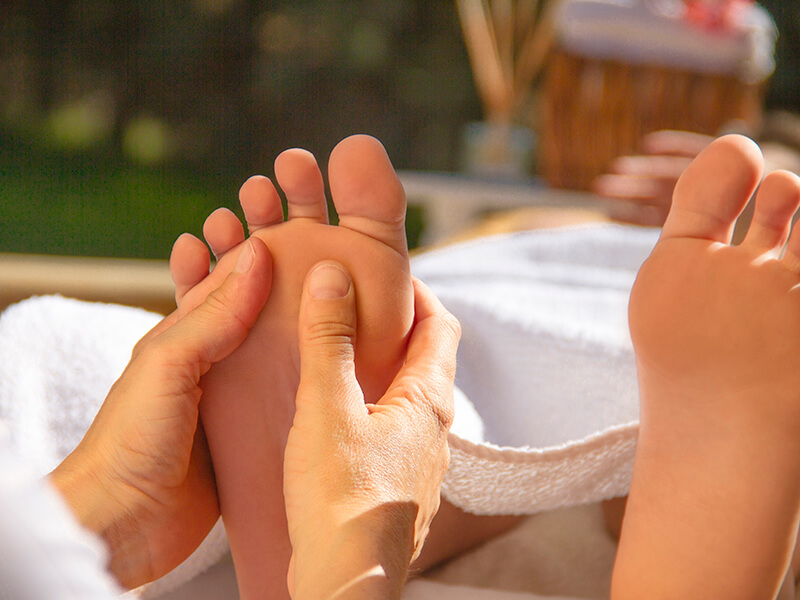Massage is only one of dozens of bodywork modalities. Many massage therapists also offer other types of bodywork or massage-adjacent work. One such modality is reflexology. Reflexology is an alternative or holistic practice that uses the application of pressure to specific points on areas of the hands, feet, ears, and face.
What To Expect
During your first reflexology session, you will complete an intake with the practitioner that will cover relevant medical history, current concerns, and the creation of a treatment plan. Reflexology sessions are done fully clothed, though loose and comfortable clothing is encouraged. The practitioner will determine which areas of the body need to be addressed. The practitioner will soak and wash your feet. They will then begin by assessing your feet for abrasions, sores, wounds, and rashes, as well as to inquire about any chronic pain that may impede the session. The practitioner will apply pressure to various points on the toes, feet, ankles, calves, hands, wrists, forearms, and ears. Occasionally they will need to apply pressure to points on the face, neck, and scalp. This pressure may range from mild to intense but should not cause significant discomfort or pain. The practitioner may encourage you to breathe through mild discomfort or intensity to promote the release of significant blockages. Feel free to notify the practitioner if a certain point is too intense or uncomfortable so that they can reassess and readjust their technique to meet your needs.
Benefits
Reflexology offers many benefits such as pain relief, nerve stimulation, restoration of blood flow, inflammation relief, and migraine relief. Reflexology may also encourage improved sleep, improved immune function, waste elimination, and metabolic function.
Contraindications
Those with current foot or hand injuries, open wounds, abrasions, rashes, fungus, osteoporosis, osteoarthritis, severe or untreated diabetes, neuralgia, neuropathy, deep vein thrombosis, blood clotting disorders, and gout should not receive reflexology on those body parts. Reflexology can still be received on the hands or ears if there are no issues afflicting those areas of the body. Discuss any medical concerns, pregnancy or suspected pregnancy, and any other concerns with your reflexology practitioner prior to your session so that they can make accommodations and adjustments to your treatment.
Frequency
Reflexology benefits are best experienced with appointments every 4-6 weeks. The benefits of reflexology are cumulative and long-lasting. Your practitioner will partner with you to create a treatment schedule based on your therapeutic goals and needs.
Aftercare
Following any reflexology session, be sure to hydrate well, eat light, and avoid strenuous activity for 24-48 hours. Your focus should be placed on rest and relaxation. Avoid alcohol, caffeinated tea, coffee, and energy drinks for the first 24 hours. Herbal tea is permitted. At the end of the day, following a reflexology session, you may wish to take an Epsom salt bath to soothe any soreness and further the healing process. Certain areas of your feet or hand may be tender, sore, or swollen. You may alternate between cryotherapy and thermotherapy in twenty-minute increments for up to an hour at a time. Should you notice excessive bruising, be sure to contact your primary care physician, as this may signify an underlying medical condition.
